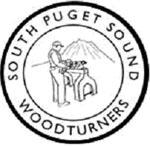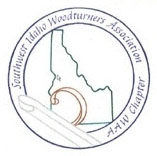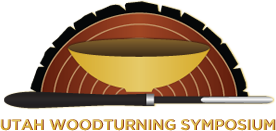Note – SPSW President Dan Stromstad informed us earlier this month that our chapter had submitted the required paperwork to the IRS to become a 501(c)(3) charitable organization. This took quite a bit of effort by many people.
The AAW has sent out a message to all AAW members regarding the AAW’s 501(c)(3) status and needs your vote. Here is the message:
January 25, 2012
Dear AAW member,
Last October, the AAW Board discovered that we needed to file new paperwork with the Internal Revenue Service in order to bring our organization into full compliance with our 501(c)(3) nonprofit status. Over the last three months, we have worked closely with our attorney to complete this process.
Let me explain why we are doing this by starting with a little history. AAW was originally incorporated in Texas. The Texas AAW corporation applied for and received 501(c)(3) nonprofit status from the IRS. In 1990, the AAW moved to Minnesota and incorporated there. In October of 2011, we learned that the IRS designation didn’t automatically transfer from Texas to the new Minnesota corporation in 1990. IRS rules do not allow the current AAW to go back now and transfer our original tax-exempt designation to the current AAW.
I am happy to report that the AAW has been granted new 501(c)(3) status as a new corporation in the state of Minnesota. The IRS expedited our request and on January 13, 2012, approved the new corporation’s 501(c)(3) nonprofit status dating from November 14, 2011.
Now we need your help. Minnesota requires that our membership vote to approve a merger of the existing AAW into the new AAW corporation. In order to complete this process, we will be asking all AAW members to vote in favor of this action no later than February 23rd, 2012.
The Board is asking for your yes vote because Minnesota requires that at least at least 10 percent of our membership vote and that a majority of those voters vote to approve for the merger to go forward. Our 501(c)(3) status allows us to receive tax-deductible donations from individuals, as well as certain corporation, foundation and government funding, and to qualify for exemptions from some taxes and fees that AAW would otherwise have to pay. Please take the time to vote yes. You can view the merger plan here.
Please follow the link below to vote. The voting period will be 30 days starting January 25th, 2012. We have sent out paper ballots to our members who do not have e-mail addresses.
If anyone has further questions about this issue, please feel free to contact me or another member of the Board.
Thank you for your continued support of AAW as we make this transition.
Sincerely,
Dale Larson
President
American Association of Woodturners
___________________________________________________________________________________
Ballot to Approve a Merger of American Association of Woodturners, Inc., a Minnesota nonprofit corporation, into American Association of Woodturners, a Minnesota nonprofit corporation
Please indicate below whether you approve the proposed merger of the current corporation, American Association of Woodturners, Inc., into a newly-formed Minnesota nonprofit corporation, American Association of Woodturners. This merger is being undertaken to correct a legal error that occurred at the time of incorporation in Minnesota, in 1990. The merger will correct the error, but should not affect the membership,operations or programs of AAW.
Please vote by clicking on the link below. Ballots must be received by February 24, 2012, in order to be counted. Mailed or e-mailed ballots may not be revoked.
AAW must receive 10% of the membership’s completed ballots in order to meet the quorum requirements for a membership vote. Since there were10,912 number of voting members, as of January 1, 2012, AAW must receive 1091 completed ballots in order for the quorum requirement to be met. In order for the amendment to be approved, fifty-one percent (51%) of members returning ballots (assuming that the total number of ballots returned meets the quorum requirement) must vote”Yes”.
Please click here to vote.



